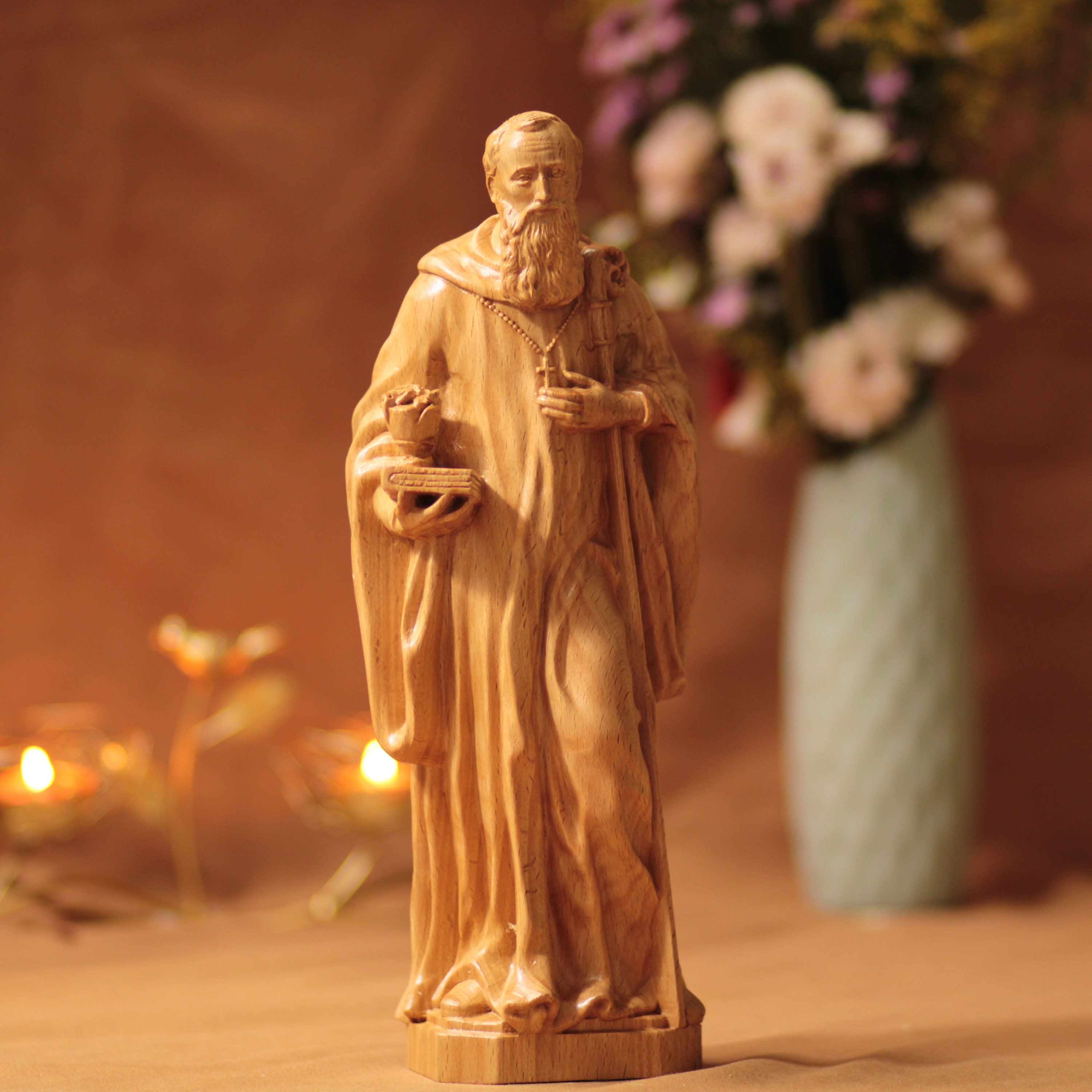Saint Benedict of Nursia, a towering figure in the history of the Christian Church, is often celebrated as the father of Western monasticism. His life and work have left an indelible mark on Christian spirituality and the structure of monastic communities. Let's delve into the extraordinary life and enduring legacy of Saint Benedict.
Early LifeBorn around 480 AD in Nursia, Italy, Benedict was raised in a time of great upheaval. The Roman Empire was crumbling, and Europe was facing a period of significant transition and uncertainty. Benedict came from a noble family, which afforded him a classical education. However, the moral decay he observed in Rome led him to seek a life of deeper spiritual fulfillment.
The Hermit of SubiacoIn his early twenties, Benedict retreated to a cave in Subiaco, about 40 miles east of Rome. There, he lived as a hermit for three years, dedicating himself to prayer and contemplation. His reputation for holiness grew, and disciples began to gather around him, seeking his guidance.
The Birth of Monastic CommunitiesBenedict eventually founded twelve small communities of monks in the region of Subiaco. These communities laid the groundwork for his later and most significant foundation at Monte Cassino, around 529 AD. It was here that Benedict wrote his seminal work, the Rule of Saint Benedict, which would become a cornerstone of monastic life.
The Rule of Saint BenedictThe Rule of Saint Benedict is a guide for monastic life that emphasizes balance, moderation, and reasonableness. It outlines a structured lifestyle of prayer, work, and community living under the leadership of an abbot. The Rule is divided into several chapters that cover various aspects of monastic life, including:
- Ora et Labora (Pray and Work): The motto of Benedictine monks, emphasizing the balance between spiritual and physical labor.
- Community Living: Instructions on how monks should live together, stressing mutual support and charity.
- Obedience and Humility: Central virtues in the Rule, where monks are encouraged to obey their abbot and practice humility in their daily lives.
The impact of Saint Benedict's Rule cannot be overstated. It became the standard for monastic living throughout Europe, shaping the character and practices of Western monasticism for centuries. The Rule's emphasis on community, stability, and prayer has inspired countless religious orders and communities beyond the Benedictines.Saint Benedict's influence extends beyond the religious sphere. His emphasis on education, agriculture, and hospitality helped to preserve and cultivate Western civilization during the Dark Ages. Monasteries became centers of learning, preserving classical texts and fostering education. They also contributed to the development of agricultural practices and provided hospitality to travelers and the needy.
Canonization and PatronageSaint Benedict was canonized in 1220 by Pope Honorius III. He is the patron saint of Europe, students, and those suffering from poison, reflecting his broad and lasting influence.
ConclusionSaint Benedict's life and work have profoundly shaped Christian monasticism and Western civilization. His legacy of balance, community, and devotion continues to inspire and guide people worldwide. As we reflect on his contributions, we are reminded of the enduring power of faith, discipline, and the pursuit of spiritual growth. Saint Benedict's example calls us to seek balance in our own lives and to build communities grounded in compassion, service, and faith.4o

